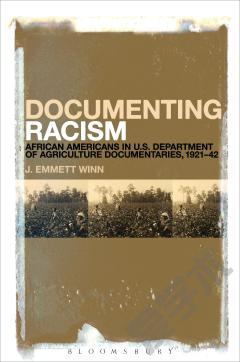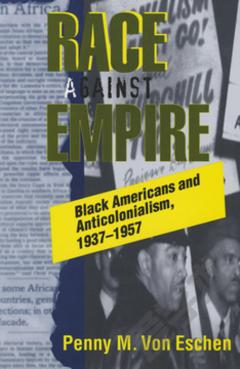Interracial Encounters: Reciprocal Representations in African and Asian American Literatures, 1896-1937
2013 Honorable Mention, Asian American Studies Association's prize in Literary Studies Part of the American Literatures Initiative SeriesWhy do black characters appear so frequently in Asian American literary works and Asian characters appear in African American literary works in the early twentieth century? Interracial Encounters attempts to answer this rather straightforward literary question, arguing that scenes depicting Black-Asian interactions, relationships, and conflicts capture the constitution of African American and Asian American identities as each group struggled to negotiate the racially exclusionary nature of American identity. In this nuanced study, Julia H. Lee argues that the diversity and ambiguity that characterize these textual moments radically undermine the popular notion that the history of Afro-Asian relations can be reduced to a monolithic, media-friendly narrative, whether of cooperation or antagonism. Drawing on works by Charles Chesnutt, Wu Tingfang, Edith and Winnifred Eaton, Nella Larsen, W.E.B. Du Bois, and Younghill Kang, Interracial Encounters foregrounds how these reciprocal representations emerged from the nation's pervasive pairing of the figure of the Negro and the Asiatic in oppositional, overlapping, or analogous relationships within a wide variety of popular, scientific, legal, and cultural discourses. Historicizing these interracial encounters within a national and global context highlights how multiple racial groups shaped the narrative of race and national identity in the early twentieth century, as well as how early twentieth century American literature emerged from that multiracial political context.2013 Honorable Mention, Asian American Studies Association's prize in Literary Studies Part of the American Literatures Initiative SeriesWhy do black characters appear so frequently in Asian American literary works and Asian characters appear in African American literary works in the early twentieth century? Interracial Encounters attempts to answer this rather straightforward literary question, arguing that scenes depicting Black-Asian interactions, relationships, and conflicts capture the constitution of African American and Asian American identities as each group struggled to negotiate the racially exclusionary nature of American identity. In this nuanced study, Julia H. Lee argues that the diversity and ambiguity that characterize these textual moments radically undermine the popular notion that the history of Afro-Asian relations can be reduced to a monolithic, media-friendly narrative, whether of cooperation or antagonism. Drawing on works by Charles Chesnutt, Wu Tingfang, Edith and Winnifred Eaton, Nella Larsen, W.E.B. Du Bois, and Younghill Kang, Interracial Encounters foregrounds how these reciprocal representations emerged from the nation's pervasive pairing of the figure of the Negro and the Asiatic in oppositional, overlapping, or analogous relationships within a wide variety of popular, scientific, legal, and cultural discourses. Historicizing these interracial encounters within a national and global context highlights how multiple racial groups shaped the narrative of race and national identity in the early twentieth century, as well as how early twentieth century American literature emerged from that multiracial political context.
{{comment.content}}








 京公网安备 11010802027623号
京公网安备 11010802027623号